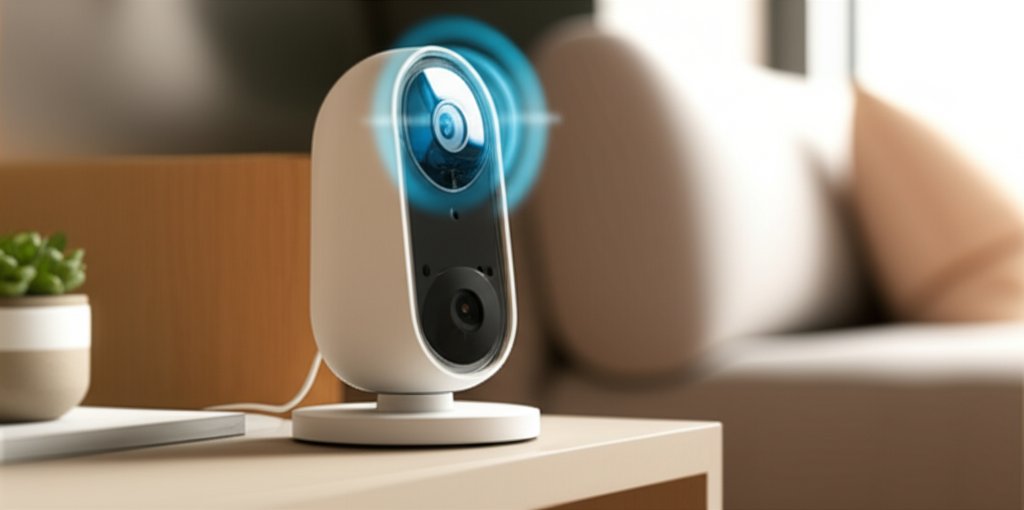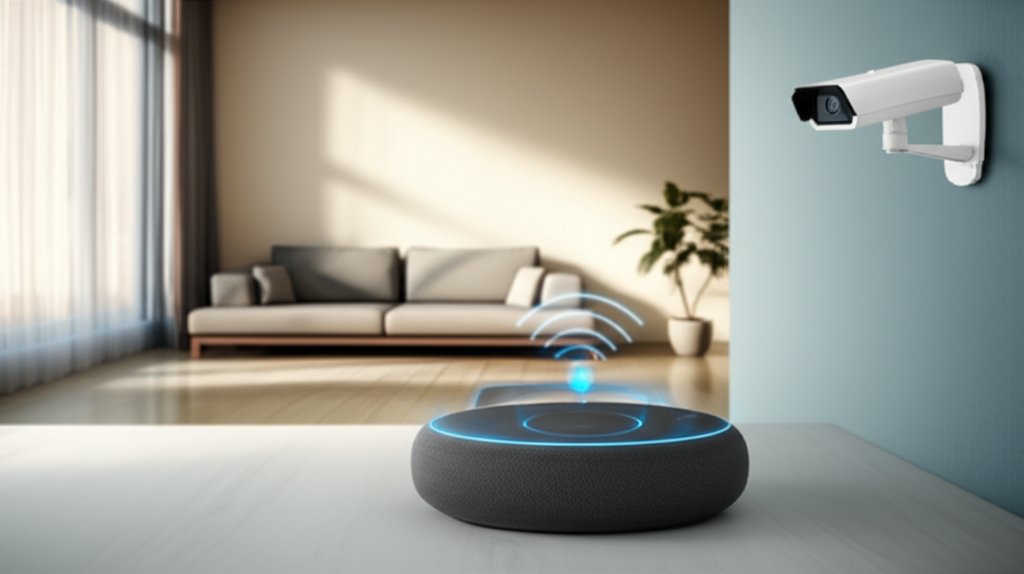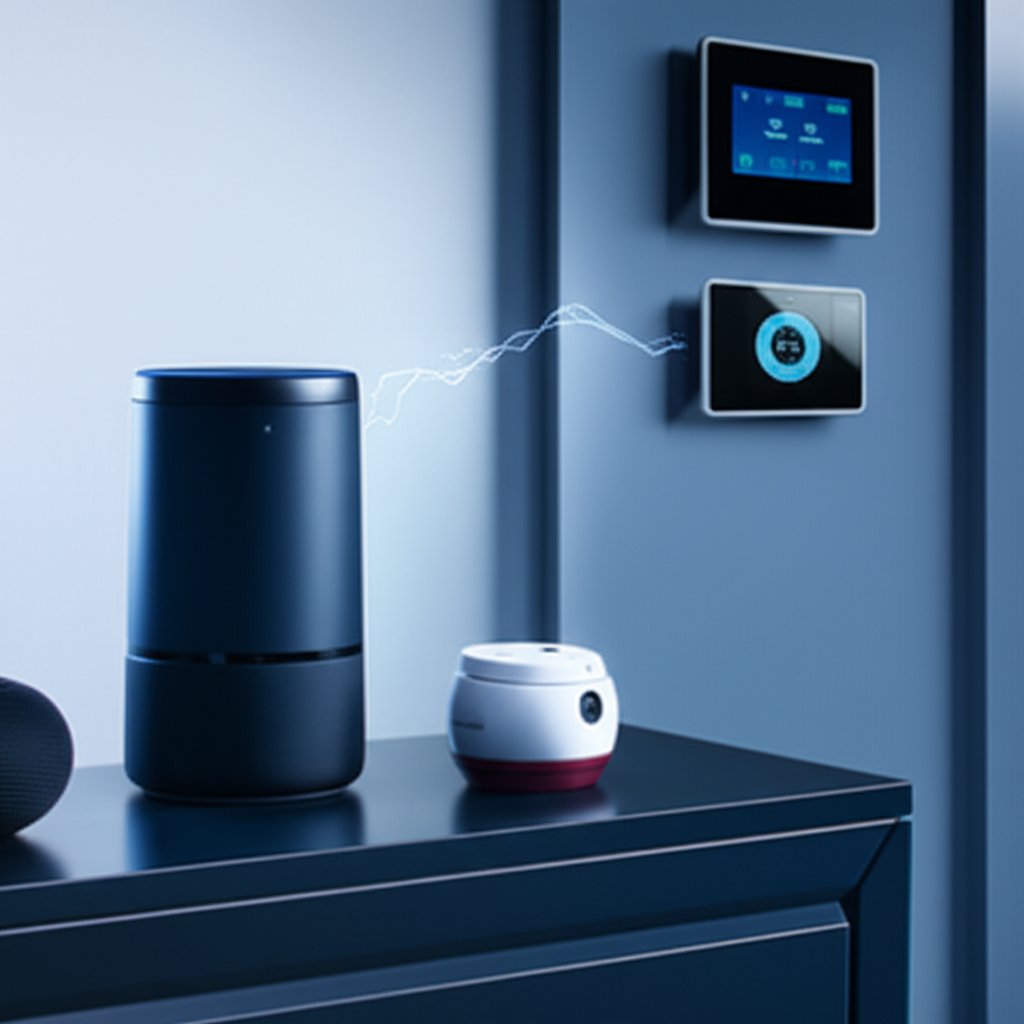Welcome to your connected home! It’s incredible, isn’t it? With smart speakers managing your day, cameras keeping an eye on your property, and thermostats learning your preferences, life’s gotten so much more convenient. But here’s the kicker: with every new device you plug in, you’re also potentially opening a new door for cyber threats. As a security professional, I’ve seen firsthand how quickly the dream of a Smart Home can turn into a security nightmare if we’re not vigilant. The good news? You absolutely can enjoy the convenience without sacrificing your privacy or safety. You just need to know how.
This article isn’t here to sound the alarm, but to empower you. We’re going to demystify the potential risks lurking in your Internet of Things (IoT) devices and walk through 5 simple, non-technical steps you can take to Secure your smart home. Understanding the principles of Zero Trust can further enhance your approach to security.
Getting Started: Essential Tools for Smart Home Security
Before we dive into the steps, let’s make sure you have everything you’ll need. Don’t worry, nothing complicated!
- Access to Your Smart Devices: This means having their associated apps on your smartphone or tablet, or knowing how to access their web interfaces (if they have one).
- Your Wi-Fi Router’s Login Details: You’ll likely need the username and password to access your router’s settings. This is usually found on a sticker on the router itself, or in the manual.
- A Password Manager (Highly Recommended): This tool will help you create and remember strong, unique passwords for all your accounts.
- A Little Time: Each step is quick, but doing them all might take about an hour, depending on how many devices you have.
Difficulty Level: Easy
You don’t need to be a tech wizard to follow these steps. We’ll guide you through each one with clear, straightforward instructions. If you can navigate a smartphone app, you can do this!
Estimated Time: 45-60 minutes
While the initial setup might take a bit of time to go through all your devices, the ongoing maintenance will be minimal. Think of it as a small investment for significant peace of mind.
Understanding the Threat: How IoT Devices Become Vulnerable
Before we fix things, it’s good to understand the ‘why.’ Why are our beloved smart gadgets sometimes a weak link in our home security? It really boils down to a few common culprits.
Weak Passwords & Default Settings
Many IoT devices ship with incredibly weak default passwords, like “admin” or “12345.” Worse yet, some users never change them! That’s essentially leaving your front door unlocked with a giant “Welcome Hackers” sign.
Outdated Software
Just like your phone or computer, your smart devices run on software, called firmware. Manufacturers often release updates that fix newly discovered security flaws. If you neglect these updates, you’re leaving yourself vulnerable to exploits that hackers already know about, including the potential for Zero-Day Vulnerabilities.
Unsecured Networks
Your Wi-Fi network is the highway connecting all your smart devices to the internet. If that highway isn’t properly secured, it’s an open invitation for someone to snoop on your traffic or even gain access to your connected gadgets. Learn more about how to fortify your home networks.
Privacy Invasion & Data Collection
Let’s be honest, many of these devices collect a lot of data about us – our habits, our voice commands, even our faces. If a device is compromised, that personal data could fall into the wrong hands, leading to anything from targeted advertising to identity theft. You want your Smart devices to serve you, not spy on you.
5 Easy Steps to Secure Your Smart Home
Now that we understand the risks, let’s roll up our sleeves and take action. These steps are designed to be practical, effective, and simple for anyone to implement.
Step 1: Fortify Your Passwords (and Use Two-Factor Authentication!)
This is arguably the most critical step. Your passwords are your first line of defense. Don’t underestimate their power!
Instructions:
- Ditch Default Passwords Immediately: For every new smart device you set up, change the default password during installation. If you’ve already got devices running on defaults, stop reading and change them now! Check the device’s manual or manufacturer’s website for instructions.
- Create Strong, Unique Passwords: A strong password is long (12+ characters), a mix of uppercase and lowercase letters, numbers, and symbols. More importantly, each password should be unique! Don’t reuse passwords across different devices or accounts. This is where a password manager becomes your best friend; it generates and securely stores these complex passwords for you.
- Enable Two-Factor Authentication (2FA) Wherever Possible: 2FA adds an extra layer of security. Even if a hacker gets your password, they’d also need a second piece of information (like a code sent to your phone or generated by an authenticator app) to get in. For a look at the future of secure logins, explore Passwordless Authentication. Check your smart device apps and associated accounts (like Google, Amazon, Apple) for 2FA options and enable them.
Step 2: Isolate Your Smart Devices with a Guest Wi-Fi Network
Think of your home network like your house. You wouldn’t let strangers wander freely through every room, would you? A guest Wi-Fi network acts like a separate guest house for your smart devices, keeping them away from your main computers and sensitive data.
Instructions:
- Understand Network Segmentation: By placing your IoT devices on a separate guest network, if one of them ever gets compromised, the attacker is isolated to that guest network. They can’t easily jump to your main network where your laptops, phones, and personal files reside. It’s a fantastic layer of defense! For even more robust isolation and enhanced network security, you might explore Zero-Trust Network Access (ZTNA) principles.
- How to Set Up a Guest Network: Most modern routers allow you to create a separate guest Wi-Fi network. You typically access your router’s administration page by typing its IP address (e.g.,
192.168.1.1) into a web browser. Look for “Guest Network,” “Guest Wi-Fi,” or “Separate Network” options in the settings. Give it a different name (SSID) and a strong, unique password (different from your main Wi-Fi password!). - Connect Your IoT Devices: Once the guest network is active, connect all your smart home devices (speakers, cameras, smart plugs, etc.) to this new guest network. Keep your computers, phones, and other sensitive devices on your main, private Wi-Fi network.
Step 3: Keep Everything Up-to-Date (Firmware and Software)
Outdated software is a cybersecurity Achilles’ heel. Manufacturers regularly release updates to patch vulnerabilities that hackers could exploit. Ignoring these is like leaving holes in your digital fence.
Instructions:
- The Importance of Updates: These aren’t just for new features; they often contain critical security patches. When a vulnerability is found, hackers start looking for unpatched devices. Don’t be one of them!
- How to Check for and Install Updates:
- Device Apps: Many smart devices have settings within their mobile apps to check for and apply firmware updates.
- Manufacturer Websites: For devices without apps, visit the manufacturer’s support website. Search for your specific model and look for a “Firmware” or “Software Updates” section. They usually provide instructions on how to download and install them.
- Enable Automatic Updates: If your device or its app offers automatic updates, enable them! This ensures you’re always protected with the latest security fixes without having to remember to check manually.
- Replace Unsupported Devices: Unfortunately, some older devices eventually stop receiving updates. If a device is no longer supported by its manufacturer, it becomes a growing security risk. Consider replacing it with a newer model that has ongoing support.
Step 4: Audit Privacy Settings and Disable Unnecessary Features
Our smart devices collect a lot of data, and sometimes they have features enabled by default that you simply don’t need, creating unnecessary risk.
Instructions:
- Review Device Permissions: Go through the settings of each smart device and its accompanying app. Look specifically at permissions related to location tracking, microphone access, camera access, and data sharing. Ask yourself: “Does this device really need this permission to function?”
- Turn Off What You Don’t Use: Do you really need remote access to your smart light bulbs when you’re not home? Is the microphone on your smart TV always necessary if you never use voice commands? Unused features can be potential entry points for attackers. Disable any functionality you don’t actively use. This reduces the “attack surface” – the number of ways a hacker could try to get in.
- Understand Data Collection: Take a moment to read the privacy policies for your smart devices. It sounds boring, but knowing what data is collected, how it’s stored, and whether it’s shared with third parties is crucial for maintaining your privacy. Make informed decisions about what you’re willing to share. This is part of being a Smart user.
Step 5: Be a Smart Shopper (and Smart User)
Security starts before you even bring a device home. Making informed decisions from the outset can save you a lot of headaches down the line.
Instructions:
- Research Before You Buy: Don’t just grab the cheapest or trendiest smart gadget. Look for devices from reputable manufacturers with a strong track record for security. Search online reviews for mentions of security vulnerabilities, privacy concerns, and consistent firmware updates. A little research goes a long way to buy a Secure device.
- Read the Privacy Policy: Yes, again! Before you commit to a purchase, quickly scan the privacy policy on the manufacturer’s website. Understand how your data will be collected, used, and shared. If it sounds invasive or unclear, consider another product.
- Create an Inventory: It’s easy to forget what you’ve got connected. Keep a simple list of all your smart devices, their manufacturer, and when you last checked for updates. This helps with ongoing maintenance.
- Secure Your Smartphone: Remember, your smartphone is often the central control panel for all your smart home devices. If your phone isn’t secure (strong password, up-to-date OS, reputable apps), then your smart home isn’t truly secure either!
Your Empowered Smart Home: A Secure Future
You’ve just gained some serious knowledge and practical skills! By following these five steps, you’ll have significantly reduced the security risks associated with your IoT devices. Your smart home will still offer all its fantastic conveniences, but now with a much stronger foundation of digital safety and privacy. This isn’t just about plugging a hole; it’s about taking proactive control of your digital life.
Here’s a quick recap of what we covered and why your actions truly matter:
- IoT devices aren’t inherently secure: They often come with vulnerabilities like weak defaults and unpatched software.
- Your actions matter: Simple steps like strong passwords and regular updates make a huge difference.
- Isolation is protection: A guest network keeps potential threats contained.
- Privacy is paramount: Being aware of data collection and disabling unnecessary features safeguards your personal information.
- Vigilance is ongoing: Security isn’t a one-time setup; it requires continuous awareness and action.
Securing your smart home isn’t just a one-and-done task; it’s an ongoing commitment. Make a habit of regularly reviewing your device settings, checking for updates, and staying informed about new threats. You’ve already taken powerful steps to take control, and by maintaining these practices, you can enjoy the full benefits of your smart home with genuine peace of mind.
Troubleshooting: Common Smart Home Security Headaches
Even with clear instructions, you might hit a snag. Here are a few common issues and how to tackle them:
- “I can’t find the update settings in my device’s app.”
- Solution: Check the device’s manual or the manufacturer’s support website. Sometimes, updates are managed directly through a web portal for the device, or they’re automatic and don’t have a visible setting.
- “My router doesn’t seem to have a guest network option.”
- Solution: If your router is very old, it might not support this feature. Consider upgrading to a newer router. Alternatively, some mesh Wi-Fi systems handle this automatically or via a simple app setting.
- “I forgot my router’s admin password.”
- Solution: Look for a sticker on the router for the default login. If that doesn’t work, you might need to perform a factory reset on your router. Warning: This will erase all your custom settings and Wi-Fi configurations, so you’ll have to set up your entire network again. Refer to your router’s manual for reset instructions.
- “My device is acting strangely after an update.”
- Solution: First, try restarting the device and its associated app. If the problem persists, check the manufacturer’s support page for known issues with the update or contact their customer support.
Start small and expand! Join our smart home community for tips and troubleshooting.









